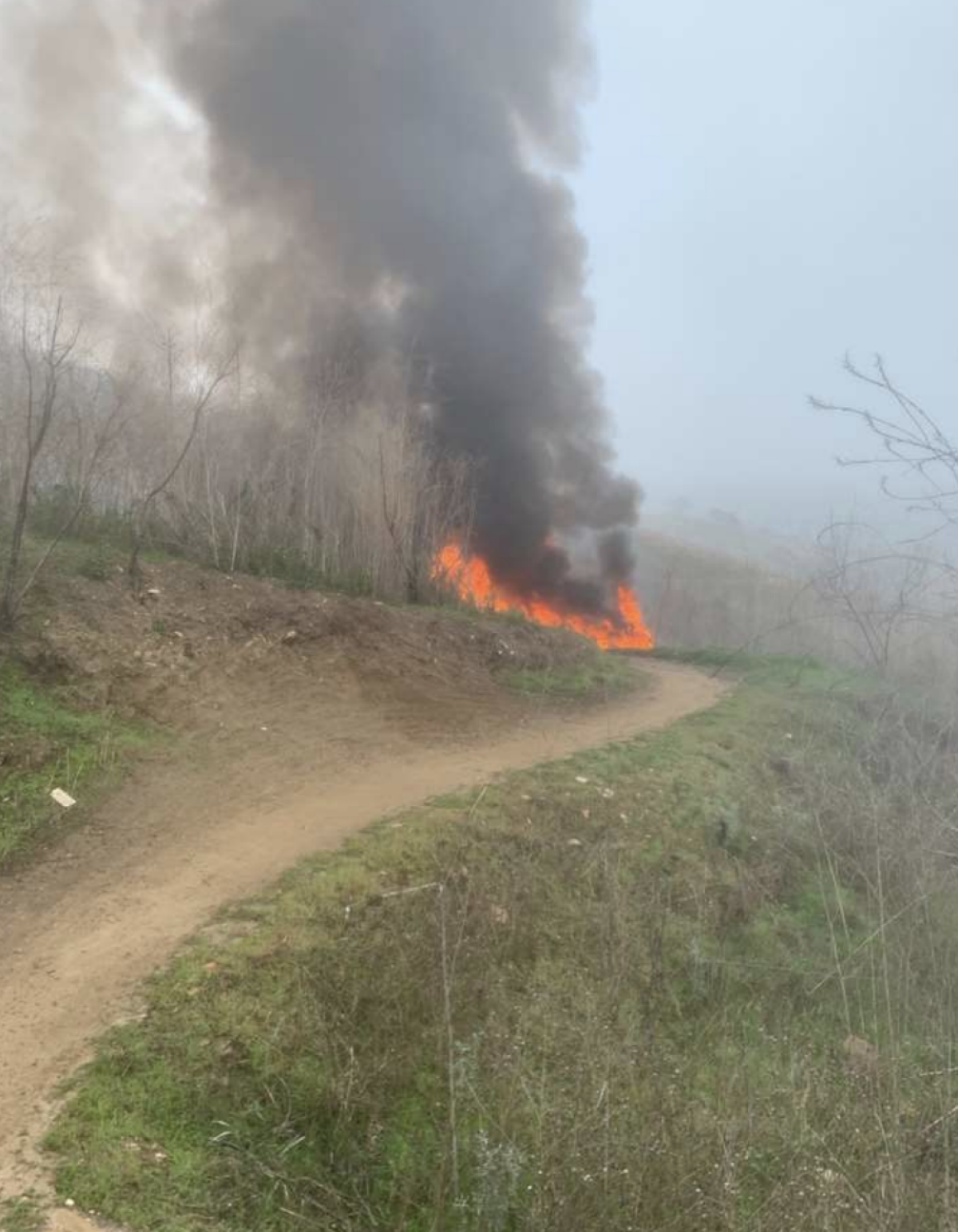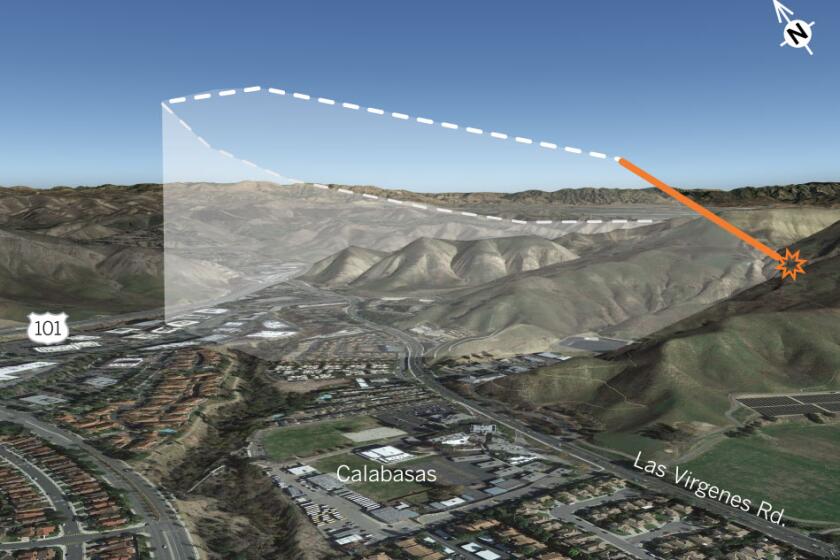What’s known, and unknown, about moments before Kobe Bryant helicopter crash

- Share via
One witness described the Calabasas hillside as being “surrounded by mist” on a quiet Sunday morning last month.
Then he heard a sound from above, growing louder and louder. When he looked up, he saw a blue-and-white helicopter amid the thick fog, moving fast before rolling to the left.
A second or two later, it slammed into the hill.
Minutes after the crash, other witnesses photographed the scene. One image showed smoke billowing from the hillside in the distance. Another, taken much closer, showed flames along a trail where the chopper went down.
This is the narrative that has emerged from the National Transportation Safety Board’s preliminary report on the crash of the helicopter carrying Kobe Bryant and eight others. The 1991 Sikorsky S-76B was transporting parents, coaches and players to a youth basketball game at Bryant’s Mamba Academy in Thousand Oaks on Jan. 26. The others who perished in the fiery crash were Bryant’s 13-year-old daughter, Gianna; Christina Mauser; Payton and Sarah Chester; John, Keri and Alyssa Altobelli; and pilot Ara Zobayan.
The NTSB report, released Friday, answers some key questions, but others have yet to be answered.
WHAT WE KNOW
The engine: The preliminary report found no evidence of engine failure before the crash. “Viewable sections of the engines showed no evidence of an uncontained or catastrophic internal failure. The No. 2 engine first-stage compressor blades exhibited tip curl in the direction opposite of rotation, consistent with powered rotation at the time of impact,” the report said.
The weather: This continues to be a key part of the investigation. The NTSB noted that videos and photos from the public “depict fog and low clouds obscuring the hilltops.” The preliminary report repeatedly noted that the pilot had struggled with a low cloud ceiling. The report included several photos, including one showing the chopper flying under cloudy conditions shortly before it struck the hill in Calabasas.
Rapid descent: NTSB member Jennifer Homendy has said the helicopter, which lacked a terrain warning system, was at 2,300 feet when it lost communication with air traffic controllers. It was about 100 feet below the top of the clouds, according to the NTSB. Eight seconds after losing communication, the helicopter was plummeting at a rate of descent “increasing to over 4,000 feet per minute,” the report stated. The helicopter was traveling about 184 mph on impact.
Tracking the last moments of Kobe Bryant’s helicopter
WHAT WE DON’T KNOW
Communication: The pilot had told an air traffic controller he was planning to climb to 4,000 feet, but logs indicate he turned left in the clouds at 2,300 feet. The pilot had lost contact with air traffic control at the very end, according to radio recordings reviewed by The Times, but it’s unclear why.
The pilot: It’s clear weather was a major concern for the pilot, Zobayan. He requested special visual flight rules, or VFR, which allow pilots to fly in controlled airspace when ceilings are less than 1,000 feet or when visibility is less than three miles. As weather conditions deteriorated on the trip from Orange County to Ventura County, the pilot requested “flight following,” a process in which controllers are in regular contact with an aircraft and can help navigate. In recorded radio communications, the air traffic control tower is heard telling the pilot the chopper is too low for flight following. Radar data indicate Zobayan, who had been a licensed commercial helicopter pilot for 19 years, guided the copter to 2,300 feet and then began a left turn. That’s when the rapid descent began. The reason for the pilot’s final moves remains unclear.
More to Read
Sign up for Essential California
The most important California stories and recommendations in your inbox every morning.
You may occasionally receive promotional content from the Los Angeles Times.















